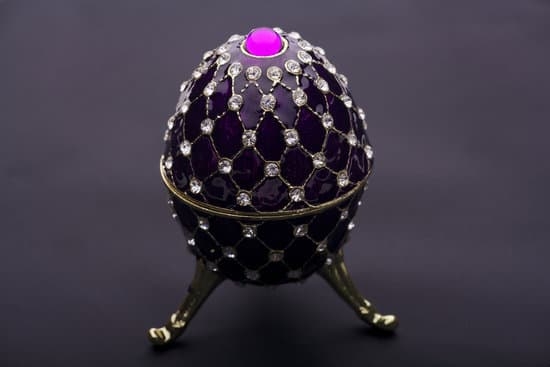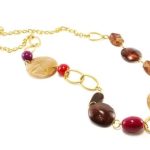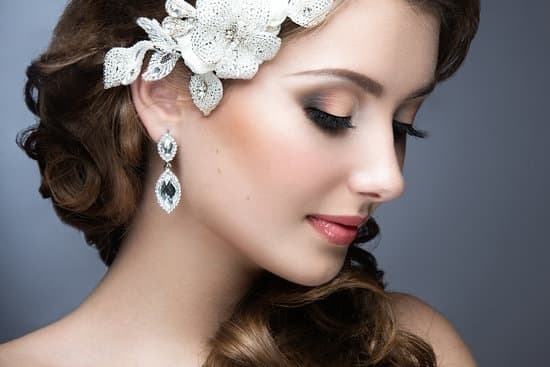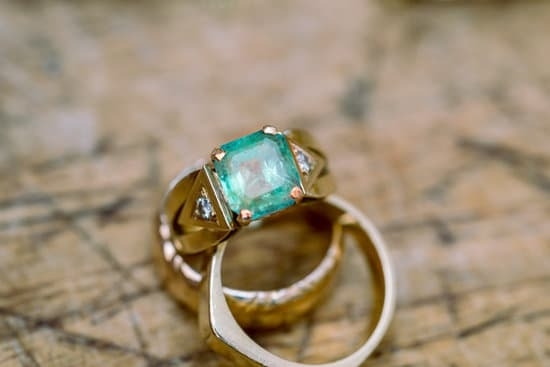The history of vintage carved wooden jewelry boxes reveals a rich and fascinating tradition of craftsmanship and artistry. These stunning pieces have been treasured for centuries, not only for their practical use in storing valuable jewelry, but also for their exquisite beauty and timeless appeal.
In this article, we will explore the origins, historical significance, cultural influence, and evolution of carved wooden jewelry boxes, as well as the artisans who have contributed to their legacy. We will also delve into the decline and resurgence of these timeless treasures, as well as provide tips on collecting and caring for vintage carved wooden jewelry boxes.
Carved wooden jewelry boxes have a long-standing history that dates back to ancient civilizations. The craftsmanship involved in creating these intricate pieces reflects the skill and dedication of artisans throughout the ages. From elaborate carvings to detailed inlays, each jewelry box tells a story of craftsmanship and artistry that has been cherished across generations.
Throughout history, carved wooden jewelry boxes have held great significance beyond their practical purpose. They have symbolized wealth, status, and love, often passed down as heirlooms from one generation to the next. As we explore the historical context of these timeless treasures, we gain an appreciation for their enduring beauty and cultural relevance.
The Origins of Carved Wooden Jewelry Boxes
The history of vintage carved wooden jewelry boxes dates back to ancient times, with some of the earliest examples found in ancient Egypt and China. In these early civilizations, wooden jewelry boxes were often intricately carved and decorated with symbols and motifs that held cultural and symbolic significance. These early pieces served not only as containers for storing precious jewelry, but also as status symbols and heirlooms passed down through generations.
Throughout history, carved wooden jewelry boxes have been used by both men and women to store their most prized possessions. In Europe during the Middle Ages, ornately carved wooden jewelry boxes were popular among the nobility and upper class, serving as a reflection of their wealth and status. The craftsmanship of these pieces was highly valued, with skilled artisans using traditional carving techniques to create intricate designs on the boxes.
During the Renaissance period, carved wooden jewelry boxes continued to be highly sought after by the elite, with many renowned artists and craftsmen creating elaborate designs that showcased their skill and creativity. As trade routes expanded, new materials and design influences made their way into the creation of carved wooden jewelry boxes, resulting in a rich tapestry of styles from different cultures.
As time progressed, the popularity of carved wooden jewelry boxes waned with the advent of industrialization and mass production. However, in recent years there has been a resurgence of interest in vintage carved wooden jewelry boxes due to their timeless beauty and craftsmanship. Collectors now seek out these pieces for their historical significance and artistic value, ensuring that the legacy of these exquisite items continues to endure.
Historical Significance of Carved Wooden Jewelry Boxes
Carved wooden jewelry boxes have a rich history that spans across different cultures and time periods. These exquisite pieces hold significant historical value and are cherished for their craftsmanship and intricate designs. Here, we’ll delve into the historical significance of carved wooden jewelry boxes and explore how they have evolved over the centuries.
The history of vintage carved wooden jewelry boxes can be traced back to ancient civilizations such as Egypt, Mesopotamia, and China. These early civilizations used carved wooden boxes to store precious jewelry, amulets, and other valuable items. The intricate carvings on these boxes often depicted religious symbols, mythological figures, or scenes from daily life, reflecting the cultural beliefs and traditions of the time.
Throughout history, carved wooden jewelry boxes have held great symbolic meaning. In many cultures, these boxes were not only used for storing jewelry but also served as a status symbol or a reflection of one’s wealth and social standing. The craftsmanship required to create these ornate boxes made them highly sought after by royalty and aristocrats, further cementing their historical significance.
The art of carving wooden jewelry boxes has also played a significant role in preserving traditional craftsmanship techniques. Many skilled artisans passed down their knowledge through generations, contributing to the continuation of this timeless craft. Today, vintage carved wooden jewelry boxes are not only valued for their historical importance but also for their artistic beauty and cultural significance.
Evolution of Carved Wooden Jewelry Box Designs
Carved wooden jewelry boxes have a rich history and have evolved over time to become not only functional storage pieces but also intricate works of art. The evolution of carved wooden jewelry box designs showcases the creativity and craftsmanship of artisans throughout the centuries.
Traditional Designs
The earliest carved wooden jewelry boxes were often designed with traditional motifs and patterns, reflecting the cultural and artistic influences of the time period. These designs ranged from geometric patterns to floral and animal motifs, showcasing the skill and artistic expression of the craftsmen who created them.
Artistic Innovation
As time progressed, carved wooden jewelry box designs became more intricate and detailed. Artisans began incorporating techniques such as inlay work, marquetry, and carving to add depth and texture to their creations. The use of different types of wood, along with embellishments such as metal hardware and decorative elements, further enhanced the aesthetic appeal of these boxes.
Modern Interpretations
In contemporary times, carved wooden jewelry box designs continue to evolve, with artists and craftsmen experimenting with new materials, styles, and techniques. Some designers are reinterpreting traditional designs with a modern twist, while others are pushing boundaries by incorporating innovative technologies into their creations.
The evolution of carved wooden jewelry box designs not only reflects the changing tastes and preferences of each era but also highlights the enduring beauty and timeless appeal of these exquisite pieces. Collectors and enthusiasts alike continue to appreciate the craftsmanship and artistry that goes into creating vintage carved wooden jewelry boxes.
Cultural Influence on Carved Wooden Jewelry Boxes
The cultural influence on carved wooden jewelry boxes is an important aspect of their history and development. Throughout the centuries, different cultures have embraced the art of carving and used it to create stunning and unique jewelry boxes that reflect their traditions, beliefs, and values. These influences can be seen in the materials used, the motifs and designs carved into the boxes, and the techniques employed by artisans.
In many cultures, the carving of wooden jewelry boxes was not only a means of creating functional storage for precious items but also a way of expressing cultural identity and spirituality. For example, in Asian cultures such as China and Japan, wooden jewelry boxes were often adorned with intricate carvings of symbols like dragons, lotus flowers, or traditional patterns that held deep spiritual significance.
These motifs were believed to bring good luck, prosperity, and protection to the wearer of the jewelry stored inside.
Similarly, in European cultures, particularly during the Renaissance period, carved wooden jewelry boxes were often embellished with religious iconography and symbols representing love, faith, and eternity. The carving techniques used in these regions were highly influenced by classical Greek and Roman art styles and often featured detailed motifs such as cherubs, floral patterns, and mythical creatures.
It is evident that cultural influences have played a significant role in shaping the designs of vintage carved wooden jewelry boxes. Understanding these cultural influences provides valuable insight into the historical significance of these exquisite pieces of functional art.
| Aspect | Description |
|---|---|
| Asian Influences | Carved with symbols like dragons & lotus flowers. |
| European Influences | Embellished with religious iconography & classical Greek/Roman art style. |
Notable Artisans and Craftsmen in Carved Wooden Jewelry Box History
Throughout the history of vintage carved wooden jewelry boxes, there have been numerous talented artisans and craftsmen who have contributed to the art form. These individuals have left their mark through their skillful techniques, innovative designs, and dedication to creating beautiful objects that stand the test of time.
One such notable artisan is Giovanni Battista Tessi, an Italian woodcarver known for his intricate and ornate jewelry box designs. Tessi’s work gained widespread popularity during the Renaissance period, and his pieces are still highly sought after by collectors today. His use of detailed carvings, delicate inlays, and luxurious materials set a standard for excellence in carved wooden jewelry boxes that continues to influence craftsmen.
Another significant figure in the history of carved wooden jewelry boxes is David Roentgen, a German cabinetmaker renowned for his expertise in creating mechanical marvels within his creations. Roentgen’s masterpieces often featured hidden compartments, secret drawers, and complex mechanisms that demonstrated his unparalleled skill and creativity. His innovative approach to design pushed the boundaries of what could be achieved with carved wooden jewelry boxes.
In addition to these individual craftsmen, there are also traditional workshops and ateliers that have produced exceptional carved wooden jewelry boxes throughout history. These establishments often passed down their techniques and knowledge from generation to generation, preserving the art form and allowing it to evolve over time while maintaining its timeless beauty.
| Artisan/Craftsman | Contribution |
|---|---|
| Giovanni Battista Tessi | Intricate carvings, delicate inlays, luxurious materials |
| David Roentgen | Mechanical marvels, hidden compartments, secret drawers |
The Decline and Resurgence of Carved Wooden Jewelry Boxes
The Decline
As time passed and modernization took over, the demand for vintage carved wooden jewelry boxes declined. With the introduction of mass-produced, cheaper jewelry storage options, traditional handmade carved wooden jewelry boxes began to lose their allure. The art of carving and crafting these unique pieces also began to fade, as it was no longer economically sustainable for artisans to produce them.
The Resurgence
However, in recent years, there has been a resurgence in the appreciation for vintage carved wooden jewelry boxes. Collectors and enthusiasts have started recognizing the historical and cultural significance of these handcrafted treasures. Additionally, there is a growing interest in sustainability and eco-friendly products, leading many to seek out handmade, heirloom-quality items such as vintage carved wooden jewelry boxes.
The Modern Market
In today’s market, there are several artisans and craftsmen dedicated to reviving the art of creating carved wooden jewelry boxes. These individuals are not only preserving traditional techniques but also infusing modern designs and functionality into their creations.
As a result, collectors and consumers now have the opportunity to invest in exquisitely crafted vintage carved wooden jewelry boxes that are both timeless and practical. The resurgence of interest in these pieces has breathed new life into this art form, ensuring that the history of vintage carved wooden jewelry boxes continues to be celebrated for generations to come.
Collecting and Caring for Vintage Carved Wooden Jewelry Boxes
Vintage carved wooden jewelry boxes are not just exquisite pieces of art, but they also hold sentimental value and historical significance. Whether you are an avid collector or a casual admirer, it is important to know how to properly care for these beautiful items to ensure their longevity and preserve their beauty for many more years to come.
Here are some tips on collecting and caring for vintage carved wooden jewelry boxes:
1. Proper Storage: When not in use, vintage carved wooden jewelry boxes should be stored in a cool, dry place away from direct sunlight. This helps prevent the wood from warping or fading over time. Additionally, wrapping the box in acid-free tissue paper or soft cloth can provide an extra layer of protection against dust and scratches.
2. Regular Maintenance: It is essential to regularly clean your vintage carved wooden jewelry box to prevent dirt and grime from building up. Use a soft, dry cloth to gently wipe down the surface of the box, taking care not to use any harsh chemicals that could damage the wood or any intricate carvings.
3. Avoid Moisture: Wooden jewelry boxes are susceptible to damage from moisture, which can cause mold or mildew to develop on the surface. To avoid this, it is important to keep your jewelry box away from sources of moisture such as bathrooms or kitchens.
By following these simple guidelines, you can ensure that your vintage carved wooden jewelry box remains in pristine condition for generations to come. Taking proper care of these beautiful pieces allows their historical significance and cultural influence to continue being appreciated by both collectors and enthusiasts alike.
Conclusion
The history of vintage carved wooden jewelry boxes is a testament to the enduring beauty and craftsmanship that has withstood the test of time. From their origins as functional containers for precious gems and trinkets, these boxes have evolved into exquisite works of art that reflect cultural influences and the skill of artisans and craftsmen throughout history.
With a rich historical significance, vintage carved wooden jewelry boxes offer a glimpse into the past, showcasing the unique designs and styles that were popular during different eras. Whether adorned with intricate carvings or inlaid with delicate patterns, these boxes represent a blend of artistry and functionality that continues to captivate collectors and enthusiasts alike.
The decline and resurgence of vintage carved wooden jewelry boxes further speaks to their enduring appeal. While they may have fallen out of favor during certain periods, their timeless charm has led to a revival in interest, with collectors seeking out these treasures from the past.
The care and attention given to preserving these pieces also underscore their lasting value, ensuring that future generations can appreciate the beauty and history encapsulated within each unique box. In conclusion, vintage carved wooden jewelry boxes are not just containers for precious items; they are cherished pieces of history that continue to stand the test of time.
Frequently Asked Questions
What Is the History of the Jewelry Box?
The history of the jewelry box dates back to ancient times when people used containers to store their valuable possessions. Over time, these boxes evolved from simple wooden or metal containers to more elaborate and ornate designs.
How Were Antique Jewelry Boxes Made?
Antique jewelry boxes were typically made by skilled craftsmen using a variety of materials such as wood, metal, leather, and even precious gemstones. These boxes often featured intricate carvings, inlays, and other decorative elements that reflected the craftsmanship of the time.
What Is the Significance of a Jewellery Box?
The significance of a jewelry box lies in its role as a safe and beautiful storage space for valuable jewelry and keepsakes. Beyond its practical function, a jewelry box can also be symbolic, representing sentiments such as love, commitment, or family heritage. In some cultures, heirloom jewelry boxes are passed down through generations, making them significant family heirlooms.

Welcome to my jewelry blog! My name is Sarah and I am the owner of this blog.
I love making jewelry and sharing my creations with others.
So whether you’re someone who loves wearing jewelry yourself or simply enjoys learning about it, be sure to check out my blog for insightful posts on everything related to this exciting topic!





